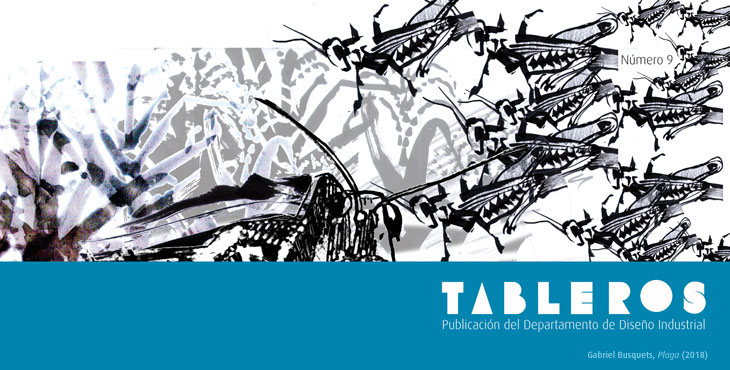Nuevos modelos de diseño participativo. Resolviendo problemáticas complejas
Keywords:
Diseño participativo, innovación social, diseño gandhiano, diseño antropocéntricoAbstract
Para las organizaciones resulta vital actualizar sus dinámicas de funcionamiento ymantenerse vigentes. A partir de un trabajo interdisciplinar y colaborativo, el diseñoaparece como motor de la innovación con una mirada antropocéntrica. Consideramosal diseño como una herramienta estratégica en la gestión. El diseño entendido comouna filosofía con la cual afrontar y resolver nuevos desafíos deja atrás la posturatradicional que lo contemplaba como un área más dentro de las organizaciones, obteniendoresultados eficientes y acordes a las necesidades particulares de cada caso.Downloads
References
Brown, T. (2008). Design Thinking. Harvard Business Review, 84-92.
Hammond, A.L., Kramer, W.J., Katz, R.S., Tran, J.T., Walker, C. (2007). Los siguientes 4 mil millones. Tamaño del mercado y estrategia de negocios en la base de la pirámide. Washington, Estados Unidos: International Finance Corporation Resources Institute.
Monat, J., Gannon, T. (2015). What is Systems Thinking? A Review of Selected Literature Plus Recommendations. International Journal of Systems Science, 4(1), 11-26.
Mootee, I. (2014). Design Thinking para la Innovación Estratégica. Barcelona, España: Empresa Activa. Ediciones Urano.
Norman, D., Stappers, P.J. (2015). DesignX: Complex Sociotechnical Systems. She Ji:The Journal of Design, Economics, and Innovation, 1(2), 83-106.
Papanek, V. (1973). Diseñando para el mundo real. Madrid, España: Blume.
Stanford Graduate School of Business (2017). Defining Social Innovation. Recuperado de https://www.gsb.stanford.edu/faculty-research/centers-initiatives/csi/defining-social-innovation
Schumpeter, J. A. (1934). The theory of economic development: an inquiry into profits, capital, credit, interest and the business cycle. Harvard Economic Studies, 46.
Downloads
Published
How to Cite
Issue
Section
License
The acceptance of the manuscript by the magazine means the non-exclusive cession of the property rights of the authors in favour of the editor, who allows the reuse, after publication (post print), under a license Attribution-NonCommercial-NoDerivatives 4.0 International.
According to these terms, the material can be copied and redistributed by any means or in any format as long as a) the author and original source of the publication are quoted (magazine and URL of the work), access to the license is provided and whether changes have been made is mentioned; and b) the material is not used for commercial purposes.
The cession of non-exclusive rights means that after the publication (post print) in Tableros the authors can publish their work in any language, means and format; in such cases it must be mentioned that the material was originally published in this magazine. Such cession also means the authorization of the authors for the work to be collected by SEDICI, the institutional archive of the Universidad Nacional de La Plata, and to be spread in the databases that the editorial team considers appropriate to increase the visibility of the publication and its authors.
Moreover, the magazine encourages the authors to deposit their productions in other institutional and thematic archives under the principle that offering the society the scientific and academic production without any restrictions contributes to a greater exchange of the global knowledge.























